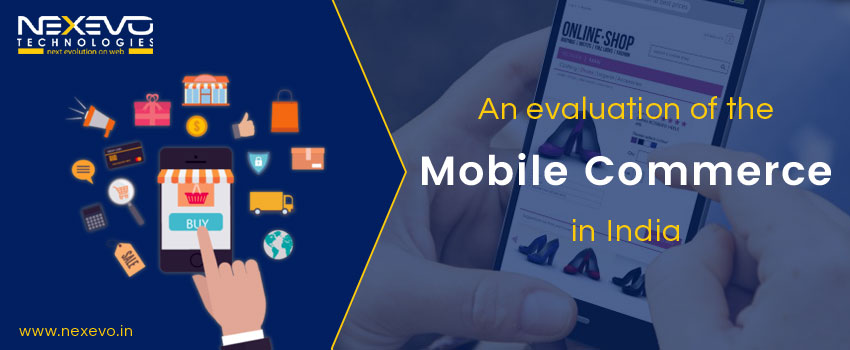How to expand E-commerce Business using Ecommerce Website
An e-commerce business operates online, selling products or services through websites or apps. It spans from startups to large enterprises, avoiding physical stores. Starting involves product selection, branding, website setup, marketing, and launch. Platforms like Shopify and WooCommerce are popular. SEO is vital for sales growth. Expansion includes diversifying products, targeting new markets, optimizing SEO, improving user experience, expanding marketing, enhancing customer service, and analytics. These strategies drive growth in the competitive e-commerce market.

What is an E-commerce Business?
An e-commerce business conducts buying and selling of products or services over the Internet. These businesses
operate primarily through online platforms, websites, or mobile applications, facilitating transactions between
buyers and sellers in a virtual environment.
E-commerce businesses come in various sizes and scales, ranging from small startups run from home to large
corporations with extensive operations. The key advantage of an e-commerce model is its ability to reach a wide
audience across geographical boundaries without the need for physical storefronts.
There are two primary models of e-commerce businesses:
Business to Business (B2B):
- Wholesale suppliers
- Office supply stores
- Industrial equipment manufacturers
- IT services providers
- Software companies
- Business consultants
Business to Consumer (B2C):
- Clothing retailers
- Electronics stores
- Home goods stores
- Grocery stores
- Health and beauty retailers
How to start an e-commerce business?
If you're dreaming about turning your million-dollar idea into an e-commerce store, you're likely thinking about what types of products to sell, who your target audience will be, and how you'll draw in shoppers. It's a lot to think about, but fear not—by focusing on five fundamental areas, you can lay the groundwork for a successful e-commerce venture.
Step 1: Identify Product Opportunities and Determine Your Product Line:
- Explore potential product niches and assess market demand to decide what to sell.
- Conduct thorough market research to understand customer needs and preferences.
- Choose products that align with your interests, expertise, and target audience.
Step 2: Conduct a Comprehensive Competitive Analysis and Develop a Business Plan:
- Analyze competitors' strengths, weaknesses, and strategies to gain insights.
- Use this information to refine your business model and differentiate your offerings.
- Draft a well-thought-out business plan outlining your objectives, strategies, and financial projections.
Step 3: Create Your Brand Identity and Establish Your Online Presence:
- Craft a unique brand identity, including a memorable logo and brand name.
- Set up your e-commerce website using a reliable platform and customize it to reflect your brand.
- Make sure that your online store is easy for users to navigate, visually attractive, and optimized to rank well
on search engines.
Step 4: Define Your Shipping Approach and Set Clear Sales and Marketing Targets:
- Determine your shipping strategy, including rates, carriers, and fulfillment methods.
- Establish sales and marketing goals based on your target market and business objectives.
- Develop a comprehensive marketing plan encompassing digital and traditional marketing channels.
Step 5: Launch Your Business with a Strategic Approach:
- Execute a well-planned launch strategy, including a soft launch to test your website and processes.
- Implement pre-launch marketing campaigns to build anticipation and attract early customers.
- Monitor performance metrics closely post-launch and make necessary adjustments to optimize your business.
- By following these steps, you can effectively launch your e-commerce business and set the stage for long-term
success.
Which platform is used to build an e-commerce website
Shopify: Known for its user-friendly interface and extensive app ecosystem, Shopify is a versatile platform
suitable for businesses of all sizes.
WooCommerce (WordPress): WooCommerce is a plugin for WordPress, that allows users to transform their WordPress
websites into fully functional e-commerce stores.
Magento: Magento is a powerful and customizable e-commerce platform favored by large enterprises and
businesses with complex requirements.
BigCommerce: BigCommerce offers a comprehensive suite of features and scalability, making it suitable for
growing businesses and enterprise-level e-commerce operations.
Wix: Wix is a website builder that also offers e-commerce functionality, making it a suitable choice for small
businesses and entrepreneurs looking for an all-in-one solution.
Learn How to Increase Ecommerce Sales with SEO Strategies
Learning how to increase e-commerce sales with SEO (Search Engine Optimization) is crucial for driving organic
traffic and boosting conversions. Here are some effective SEO strategies that will help you to increase sales in
your e-commerce business:
Keyword Research: Identify relevant keywords that potential customers are using to search for products in your
niche. use keyword research tools such as Google Keyword Planner, SEMrush, or Ahrefs to uncover high-volume,
low-competition keywords.
Optimize Product Pages: Optimize your product pages with targeted keywords in the page title, meta
description, URL, and product descriptions. Use descriptive, unique, and keyword-rich content to improve visibility
in search engine results.
Improve Site Structure: Ensure your website has a clear and organized structure with easy navigation. Create
categories and subcategories that align with your product offerings to help search engines understand your site's
hierarchy.
Optimize Images: Optimize product images by using descriptive filenames and alt tags with relevant keywords.
This helps improve visibility in image search results and enhances user experience for visually impaired users.
Create High-Quality Content: Develop informative and engaging content such as blog posts, buying guides,
product reviews, and tutorials related to your products or industry. Use long-tail keywords and answer common
questions to attract targeted traffic and establish authority.
Improve Page Speed: Optimize your website's loading speed to provide a better user experience and improve search engine rankings. Compress images, minify CSS and JavaScript files, and leverage browser caching to reduce
load times.
Mobile Optimization: Ensure your e-commerce website is fully optimized for mobile devices to cater to the
increasing number of mobile shoppers. Use responsive design, optimize page elements for touch interaction, and
prioritize mobile-friendly content.
Build High-Quality Backlinks: Earn backlinks from reputable and relevant websites to improve your site's
authority and search engine rankings. Focus on acquiring natural backlinks through guest blogging, influencer
partnerships, and industry directories.
Track and assess performance: Utilize tools like Google Analytics and Google Search Console to monitor your
website's performance, track keyword rankings, and pinpoint areas for enhancement. Analyze metrics like traffic,
bounce rate, and conversion rate to fine-tune your SEO strategy.
Stay Updated with SEO Trends: Keep abreast of the latest SEO trends and algorithm updates to adapt your
strategy accordingly. Follow industry blogs, attend webinars, and participate in forums to stay informed and
optimize your e-commerce website for ongoing success.
How To Expand Your E-commerce Business
Expanding your eCommerce website involves several steps:
Diversify Product Range: Expand your product offerings to cater to a broader audience or to meet evolving
customer needs. Consider adding complementary products or variations of existing products to attract new
customers.
Target New Markets: Identify new geographic regions or demographics to target with your products. Conduct
market research to understand the preferences and purchasing behaviors of these potential customers.
Optimize SEO: Improve your website's search engine optimization (SEO) to increase visibility and attract
organic traffic. Focus on optimizing product descriptions, meta tags, and website content for relevant keywords.
Improve User Experience: Continuously improve the user experience (UX) of your website to make it more
intuitive and engaging for visitors. Optimize page load times, streamline navigation, and implement responsive
design for mobile users.
Expand Marketing Channels: Explore additional marketing channels to reach a wider audience. Consider investing
in paid advertising, social media marketing, email marketing, influencer partnerships, and affiliate marketing to
expand your reach.
Improve Customer Service: Prioritize excellent customer service to build loyalty and encourage repeat
purchases. Offer multiple support channels, respond promptly to inquiries, and resolve issues effectively to create
a positive shopping experience.
Invest in Analytics: Use website analytics tools to track visitor behavior, monitor sales trends, and identify
areas for improvement. Analyze data to understand customer preferences, optimize marketing efforts, and make
data-driven decisions.
Expand Shipping Options: Offer flexible shipping options to accommodate different customer preferences and
needs. Consider providing expedited shipping, international shipping, or free shipping thresholds to attract more
customers.
Enhance Product Presentation: Invest in high-quality product photography and compelling product descriptions
to showcase your offerings effectively. Use multimedia elements such as videos or 360-degree views to provide a
better understanding of your products.
Collaborate with Partners: Explore partnerships with other businesses or influencers to expand your reach and access new audiences. Collaborate on joint promotions, co-branded campaigns, or affiliate programs to leverage each other's networks. By implementing these strategies, you can effectively expand your eCommerce website and reach new customers, driving growth and success for your online business.
Conclusion
By implementing the outlined strategies and staying proactive in adapting to market trends, e-commerce entrepreneurs can position their businesses for long-term success and profitability. With a focus on innovation, customer satisfaction, and continuous improvement, you can unlock the full potential of your e-commerce venture and thrive in today's digital economy.
Frequently Asked Question
1. How can I ensure the success of my e-commerce venture in the long term?
Ensuring the success of an e-commerce venture in the long term requires innovation, customer satisfaction, continuous improvement, staying proactive in adapting to market trends, and implementing effective strategies to drive growth and profitability. Regular monitoring of performance metrics and making data-driven decisions are also essential for long-term success.
2. How can I trust an e-commerce business to provide quality products and services?
Trust in an e-commerce business is built through factors like brand reputation, customer reviews, secure payment options, transparent policies, and reliable customer service. Look for established brands, positive feedback from other customers, and clear communication regarding product details, shipping, and returns.
3. What steps should I take to ensure the security of my personal and financial information when shopping online?
To safeguard your information, only shop on secure websites with SSL encryption. Avoid sharing sensitive details over public Wi-Fi networks and use strong, unique passwords for your accounts. Additionally, monitor your bank statements regularly for any unauthorized transactions and report any suspicious activity immediately.
Related to this
Let's Discuss Your Project











